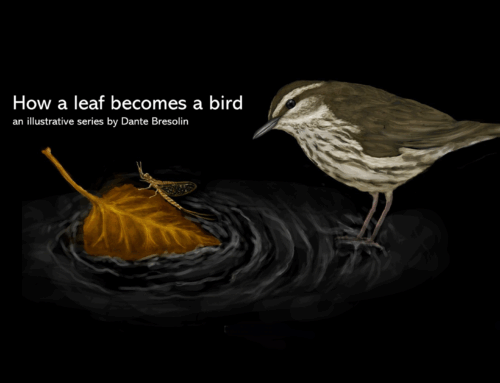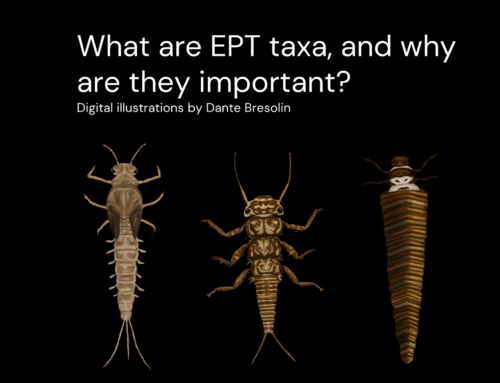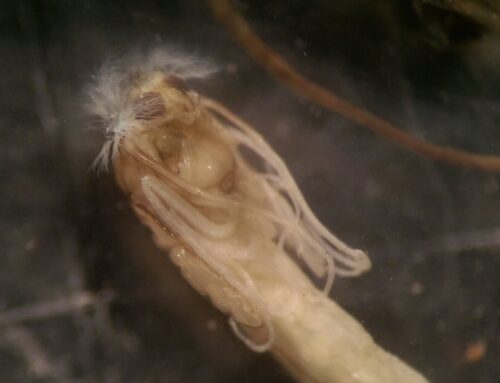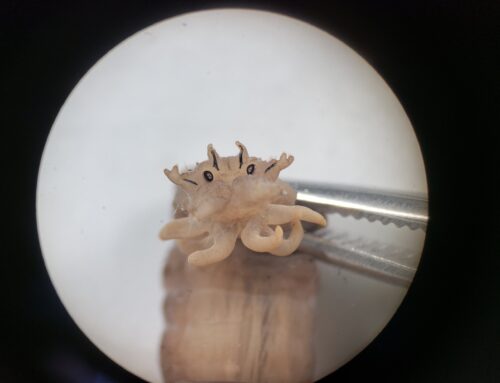Illustration by Shayenna Nolan. Download for free here: https://doi.org/10.6084/m9.figshare.23902461.v1
Let’s break down the sections of a stream.
In the Riffle-Pool-Run sequence, each habitat has unique properties that allow for a diversity of organisms to exist and thrive.
Riffles
If you’ve ever visited a stream and had seen and heard water rushing and splashing over large rocks, you’ve found the riffle. This section is where water flows the fastest, is the shallowest, and where oxygen is importantly mixed into the water. This is what most people think of as a stream. The invertebrates that live here need to really hang on tight and cement themselves down as to not get swept downstream, like blackflies, caddisflies, and stoneflies. Some fish also use riffles to feed, by positioning themselves downstream of the fast-flowing water to wait for food.
Pools
The pool begins where the fast-flowing water begins to carve away at the sediment at the bottom and sides, making it deeper and wider, and where it slows down the rate of flow. Carving away at the banks makes the beautiful s-shaped curves and meanders we see everywhere today, which are constantly being moulded and shaped by flowing water. Invertebrates that like to live in slower flowing water include snails, aquatic worms, and crayfish. Fish like to use pools too! They can rest in the slow-moving water and utilize the abundant organic matter resources to hide.
Runs
Runs come after pools and before riffles, where water is deep (like pools), and has fast flowing water (like riffles), and a uniform flow. You can see this for yourself at home. Run some water on a flat angled surface, like a plate, and observe the s-shapes that the water forms. The straight areas are riffles, curved areas are pools and the spots after these curves are the runs. This is a natural process, where riffles, pools, and runs are formed.
Together, the Riffle-Pool-Run sequence re-shapes the landscape around it, creating meandering lines and curving paths of water to flow. These different habitats allow a great diversity of invertebrates to thrive, where there is fast or slow moving water you’ll find a different community living in each.






